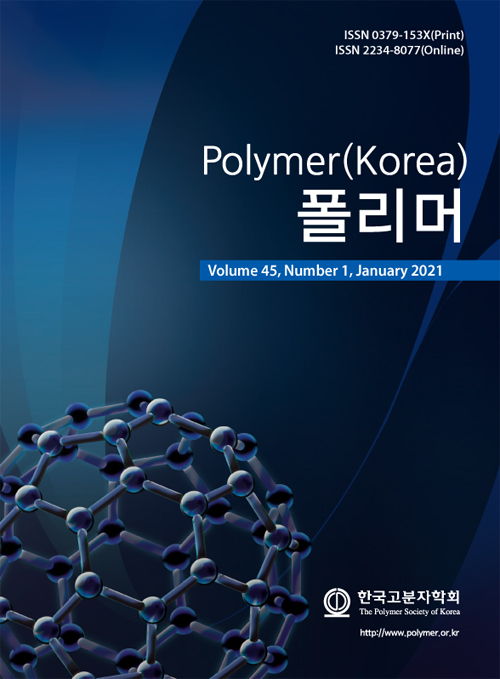References
- 1. Hubbell, J. A. Biomaterials in Tissue Engineering. Bio-Technology 1995, 13, 565-576.
-

- 2. Ratner, B. D.; Bryant, S. J. Biomaterials: Where We have been and Where We are Going. Annu. Rev. Biomed. Eng. 2004, 6, 41-75.
- 3. Hoffman, A. S. Hydrogels for Biomedical Applications. Adv. Drug Deliv. Rev. 2002, 54, 3-12.
- 4. Choi, B.; Kim, S.; Lin, B.; Li, K.; Bezouglaia, O.; Kim, J.; Evseenko, D.; Aghaloo, T.; Lee, M. Visible-light-initiated Hydrogels Preserving Cartilage Extracellular Signaling for Inducing Chondrogenesis of Mesenchymal Stem Cells. Acta Biomater. 2015, 12, 30-41.
-

- 5. Kim, I. L.; Mauck, R. L.; Burdick, J. A. Hydrogel Design for Cartilage Tissue Engineering: A Case Study with Hyaluronic Acid. Biomaterials 2011, 32, 8771-82.
-

- 6. Schante, C.; Zuber, G.; Herlin, C.; Vandamme, T. Chemical Modifications of Hyaluronic Acid for the Synthesis of Derivatives for a Broad Range of Biomedical Applications. Carbohydr. Polym. 2011, 85, 469-489.
-

- 7. Van Vlierberghe, S.; Dubruel, P.; Schacht, E. Biopolymer-Based Hydrogels as Scaffolds for Tissue Engineering Applications: A Review. Biomacromolecules 2011, 12, 1387-1408.
-

- 8. Tang, S.; Vickers, S.; Hsu, H.; Spector, M. Fabrication and Characterization of Porous Hyaluronic Acid-collagen Composite Scaffolds. J. Biomed. Mater. Res. Part A 2007, 82A, 323-335.
-

- 9. Chang, N.; Jhung, Y.; Yao, C.; Yeh, M. Hydrophilic Gelatin and Hyaluronic Acid-treated PLGA Scaffolds for Cartilage Tissue Engineering. J. Appl. Biomater. Funct. Mater. 2013, 11, 45-52.
-

- 10. Liao, E.; Yaszemski, M.; Krebsbach, P.; Hollister, S. Tissue-Engineered Cartilage Constructs Using Composite Hyaluronic Acid/Collagen I Hydrogels and Designed Poly(Propylene Fumarate) Scaffolds. Tissue Eng. 2007, 13, 537-550.
-

- 11. Francis, R.; Baby, D.; Kumar, D. Poly(N-isopropylacrylamide) Hydrogel: Effect of Hydrophilicity on Controlled Release of Ibuprofen at Different pH. J. Appl. Polym. Sci. 2012, 124, 5079-5088.
-

- 12. Kang, M.; Hong, S.; Kim, J. Release Property of Microgels Formed by Electrostatic Interaction between Poly(N-isopropyl-acrylamide-co-methacrylic acid) and Poly(N-isopropylacrylamide-co-dimethylaminoethylmethacrylate). J. Appl. Polym. Sci. 2012, 125, 1993-1999.
-

- 13. Galperin, A.; Long, T.; Ratner, B. Degradable, Thermo-Sensitive Poly(N-isopropyl acrylamide)-Based Scaffolds with Controlled Porosity for Tissue Engineering Applications. Biomacromolecules 2010, 11, 2583-2592.
-

- 14. Rennerfeldt, D.; Renth, A.; Talata, Z.; Gehrke, S.; Detamore, M. Tuning Mechanical Performance of Poly(ethylene glycol) and Agarose Interpenetrating Network Hydrogels for Cartilage Tissue Engineering. Biomaterials 2013, 34, 8241-8257.
-

- 15. Kim, S.; Healy, K. Synthesis and Characterization of Injectable Poly(N-isopropylacrylamide-co-acrylic acid) Hydrogels with Proteolytically Degradable Cross-links. Biomacromolecules 2003, 4, 1214-1223.
-

- 16. Zhang, X.; Sun, G.; Wu, D.; Chu, C. Synthesis and Characterization of Partially Biodegradable and Thermosensitive Hydrogel. J. Mater. Sci.-Mater. Med. 2004, 15, 865-875.
-

- 17. Hern, D. L.; Hubbell, J. A. Incorporation of Adhesion Peptides into Nonadhesive Hydrogels Useful for Tissue Resurfacing. J. Biomed. Mater. Res. 1998, 39, 266-276.
-

- 18. Drury, J. L.; Mooney, D. J. Hydrogels for Tissue Engineering: Scaffold Design Variables and Applications. Biomaterials 2003, 24, 4337-4351.
-

- 19. Lee, K.; Rowley, J.; Eiselt, P.; Moy, E.; Bouhadir, K.; Mooney, D. Controlling Mechanical and Swelling Properties of Alginate Hydrogels Independently by Cross-linker Type and Cross-linking Density. Macromolecules 2000, 33, 4291-4294.
-

- 20. Kim, J.; Lee, K. W.; Hefferan, T. E.; Currier, B. L.; Yaszemski, M. J.; Lu, L. Synthesis and Evaluation of Novel Biodegradable Hydrogels Based on Poly(ethylene glycol) and Sebacic Acid as Tissue Engineering Scaffolds. Biomacromolecules 2008, 9, 149-157.
-

- 21. Kim, J.; Yaszemski, M. J.; Lu, L. Development of Biodegradable and Injectable Macromers Based on Poly(ethylene glycol) and Diacid Monomers. J. Biomed. Mater. Res. 2009, 90, 1010-1020.
-

- 22. Park, Y.; Tirelli, N.; Hubbell, J. Photopolymerized Hyaluronic Acid-based Hydrogels and Interpenetrating Networks. Biomaterials 2003, 24, 893-900.
-

- 23. Son, K.; Lee, J. Synthesis and Characterization of Poly(Ethylene Glycol) Based Thermo-Responsive Hydrogels for Cell Sheet Engineering. Materials 2016, 9, 854.
-

- 24. Seidlits, S.; Khaing, Z.; Petersen, R.; Nickels, J.; Vanscoy, J.; Shear, J.; Schmidt, C. The effects of Hyaluronic Acid Hydrogels with Tunable Mechanical Properties on Neural Progenitor Cell Differentiation. Biomaterials 2010, 31, 3930-3940.
-

- 25. Hou, X.; Yang, W.; Li, A.; Hou, J.; Zhang, C. Effects of Incorporating Acrylolsobutyl Polyhedral Oligomeric Silsesquioxane on the Properties of P(N-isopropylacrylamide-co-poly(ethylene glycol) diacrylate) Hybrid Hydrogels. Polym. Bull. 2017, 74, 1831-1847.
-

- 26. Li, P.; Hou, X.; Qu, L.; Dai, X.; Zhang, C. PNIPAM-MAPOSS Hybrid Hydrogels with Excellent Swelling Behavior and Enhanced Mechanical Performance: Preparation and Drug Release of 5-Fluorouracil. Polymers 2018, 10, 137.
-

- 27. Zhang, X.; Li, C.; Hu, Y.; Liu, R.; He, L.; Fang, S. A Novel Temperature and pH Dual-responsive Hybrid Hydrogel with Polyhedral Oligomeric Silsesquioxane as Crosslinker: Synthesis, Characterization and Drug Release Properties. Polym. Int. 2014, 63, 2030-2041.
-

- 28. Chen, S.; Jiang, L.; Dan, Y. Preparation and Thermal Response Behavior of Poly(N-isopropylacrylamide-co-acrylic acid) Microgels via Soap-Free Emulsion Polymerization Based on AIBN Initiator. J. Appl. Polym. Sci. 2011, 121, 3322-3331.
-

- 29. Ratner, B. D.; Hoffman, A. S.; Schoen, F. J.; Lemons, J. E. Biomaterials Science : An Introduction to Materials in Medicine, 3rd ed.; Academic Press: San Diego, CA, 2013.
- 30. Melvin, S.; Wilson, S. The Utility of Behavioral Studies for Aquatic Toxicology Testing: A Meta-analysis. Chemosphere 2013, 93, 2217-2223.
-

- 31. Fako, V.; Furgeson, D. Zebrafish as a Correlative and Predictive Model for Assessing Biomaterial Nanotoxicity. Adv. Drug Deliv. Rev. 2009, 61, 478-486.
-

- Polymer(Korea) 폴리머
- Frequency : Bimonthly(odd)
ISSN 0379-153X(Print)
ISSN 2234-8077(Online)
Abbr. Polym. Korea - 2023 Impact Factor : 0.4
- Indexed in SCIE
 This Article
This Article
-
2021; 45(1): 171-177
Published online Jan 25, 2021
- 10.7317/pk.2021.45.1.171
- Received on Nov 10, 2020
- Revised on Dec 2, 2020
- Accepted on Dec 4, 2020
 Correspondence to
Correspondence to
- Jinku Kim
-
Department of Bio and Chemical Engineering, Hongik University, Sejong 30016, Korea
- E-mail: jinkukim@hongik.ac.kr









 Copyright(c) The Polymer Society of Korea. All right reserved.
Copyright(c) The Polymer Society of Korea. All right reserved.